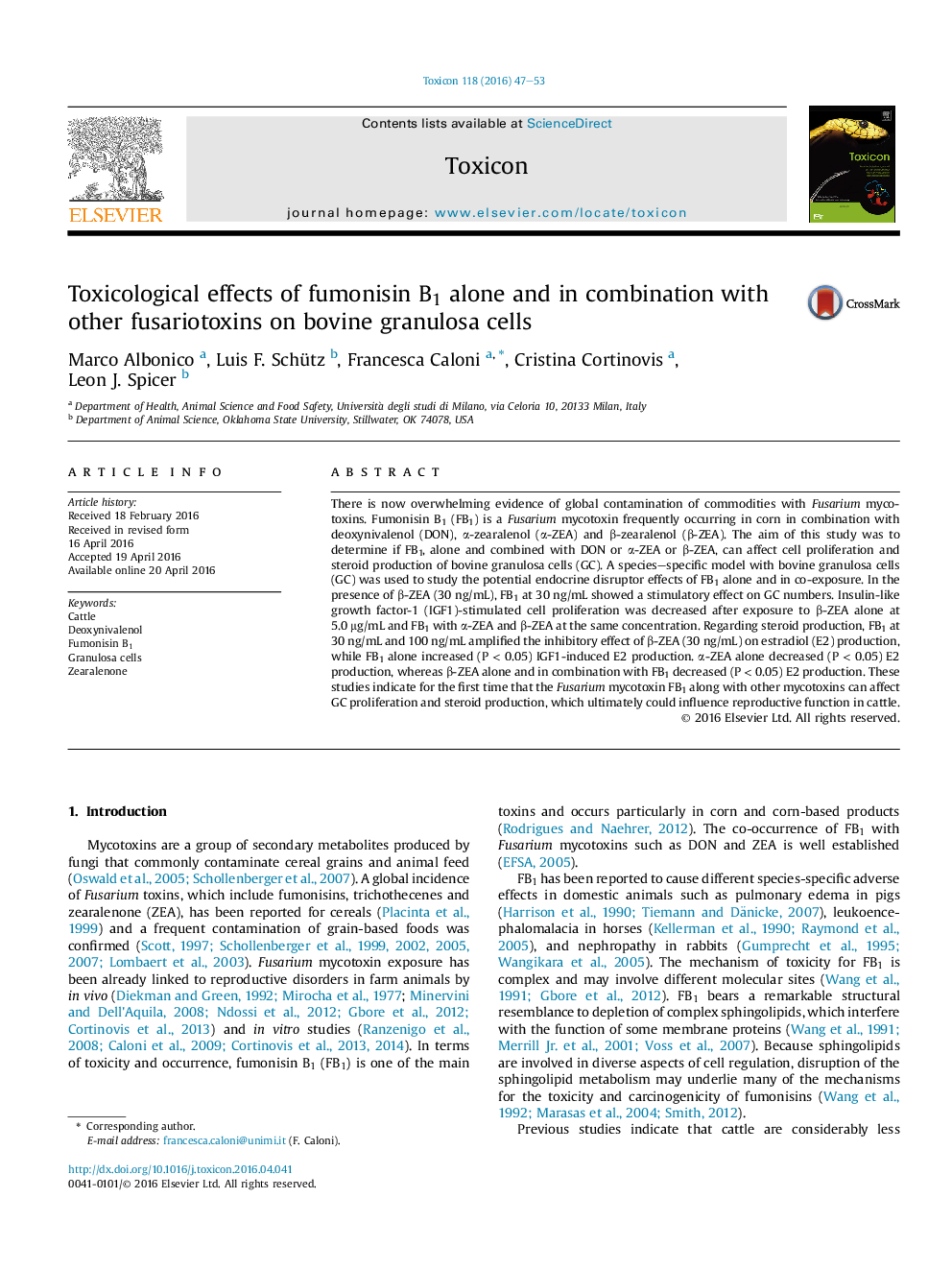| Article ID | Journal | Published Year | Pages | File Type |
|---|---|---|---|---|
| 2064090 | Toxicon | 2016 | 7 Pages |
•Fumonisin B1 alone or with other mycotoxins can affect bovine granulosa cells.•Fumonisin B1 with other fusariotoxins can alter proliferation and steroidogenesis.•Fumonisin B1 together with other fusariotoxins may impair reproduction in cattle.
There is now overwhelming evidence of global contamination of commodities with Fusarium mycotoxins. Fumonisin B1 (FB1) is a Fusarium mycotoxin frequently occurring in corn in combination with deoxynivalenol (DON), α-zearalenol (α-ZEA) and β-zearalenol (β-ZEA). The aim of this study was to determine if FB1, alone and combined with DON or α-ZEA or β-ZEA, can affect cell proliferation and steroid production of bovine granulosa cells (GC). A species–specific model with bovine granulosa cells (GC) was used to study the potential endocrine disruptor effects of FB1 alone and in co-exposure. In the presence of β-ZEA (30 ng/mL), FB1 at 30 ng/mL showed a stimulatory effect on GC numbers. Insulin-like growth factor-1 (IGF1)-stimulated cell proliferation was decreased after exposure to β-ZEA alone at 5.0 μg/mL and FB1 with α-ZEA and β-ZEA at the same concentration. Regarding steroid production, FB1 at 30 ng/mL and 100 ng/mL amplified the inhibitory effect of β-ZEA (30 ng/mL) on estradiol (E2) production, while FB1 alone increased (P < 0.05) IGF1-induced E2 production. α-ZEA alone decreased (P < 0.05) E2 production, whereas β-ZEA alone and in combination with FB1 decreased (P < 0.05) E2 production. These studies indicate for the first time that the Fusarium mycotoxin FB1 along with other mycotoxins can affect GC proliferation and steroid production, which ultimately could influence reproductive function in cattle.
